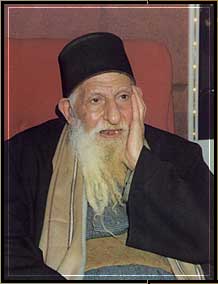As yesterday was Pioneer Day, I thought it would be interesting to post a little-known source regarding the Mormon doctrine of the gathering.
In 1889, Fred Stauffer, of the "Turkish Mission," wrote to the apostle George Teasdale, mission president in Europe.
"The Turks have of late passed strict laws prohibiting any of their subjects from leaving the empire. Many who have attempted to leave have been taken and imprisoned, that was the case with two parties in Sivas this week. Hence the idea of having a gathering place in Asia Minor or Palestine is very pleasing to the Saints because they are all anxious to gather to one place where they can be more fully instructed in the ways of God"[1]
While I hesitate to term this an important interim step in the development of the gathering, it is still a fascinating document. President Ferdinand Hintze explored the possibility of establishing a Mormon colony near Jerusalem. He considered it "a good plan for us to settle in Palestine and make a colony there."[2]
In this, he was highly influenced by the Mormon converts in the German Colony of Haifa. The colony was established by members of the Temple Society from Württemberg. This Millenarian group broke off from the Lutheran church, and sought to pave the way for the return of the Messiah by redeeming the Holy Land through communal agriculture.[3] Ironically, they were actually preceded in this by two former Mormons, Warder Cresson, and George Adams.[4]
As Stauffer wrote to Teasdale, founding a Mormon colony in Palestine, or Turkey, would allow the saints- barred by Ottoman laws from emigrating outside the Empire- to gather to a central location and live the gospel as an united community.
George Q. Cannon concurred. "It appears that the time must soon come when a gathering place for those who obey the gospel in those regions must be appointed, so that they can be taught the principles of righteousness in a body and not be left in their scattered condition."[5]
Gathering was vital to early Mormonism. If not to the Zion in Missouri, then to the Rocky Mountains. If not to the Rocky Mountains, then to some central spot locally. The theology, as ever, was tempered by pragmatic considerations. Later, even this was deemphasised, and members of the church encouraged to build up their local communities.
As far as the Mormon dream of an agricultural colony in the East goes, it never materialised, but that is another story.
[1]The Latter-Day Saints Millennial Star, vol. 52, p. 395.
[2]
Rao H. Lindsay, The Dream of a Mormon Colony in the Near East. Dialogue 1 (Winter 1966), p. 52. http://www.dialoguejournal.com/wp-content/uploads/sbi/articles/Dialogue_V01N04_52.pdf
[3]http://www.gameo.org/encyclopedia/contents/T460.html
[4]Ruth Kark Millenarian and Agricultural Settlement in the Holy Land in the Nineteenth Century, Journal of Historical Geography, Vol. 9, No. 1, 1983. http://geography.huji.ac.il/.upload/RuthPub/Num%2030%20Millenarian%20and%20Agricultural%20Settlement%20in%20the%20Holy%20Land.PDF
[5]Lindsay, Mormon Colony, p. 53.





